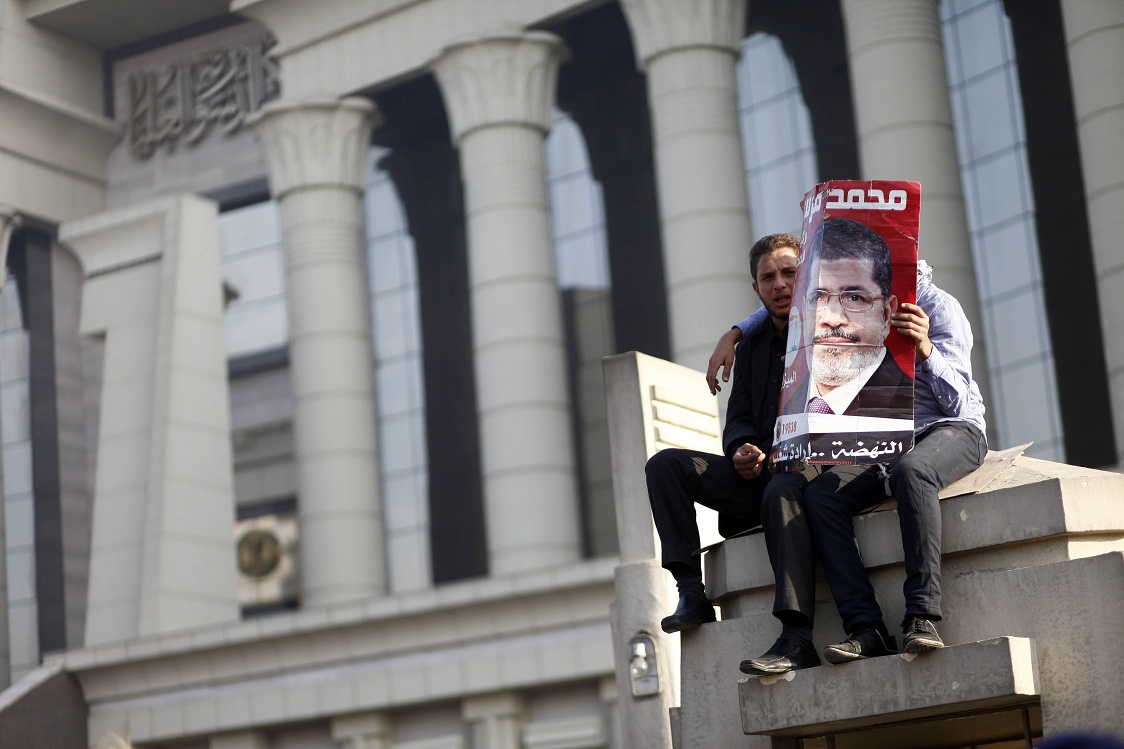Traveling to Morocco was a starting point for Mexican writer Alberto Ruy-Sánchez who, for the past few years, has been tracing out a new map, one that would bring Mexico closer to the Arab world.
A novelist and a non-fiction writer, poet and essayist, Ruy-Sánchez gave a lecture at the Naguib Mahfouz Hall of the new Egyptian Writers’ Union headquarters at the Citadel last week to an audience of writers, journalists and professors.
The focus of his lecture centered on how Arabic culture has permeated Latin American literature. The revelations and thorough observation of Ruy-Sánchez s studies is the product of years of research aimed at exploring the little-known history that binds those two civilizations together.
The event was part of the inauguration of the new headquarters. Over the span of two hours, many examples highlighted Ruy-Sánchez’s findings.
Culture and literature are sometimes synonymously used without giving much weight to one another. The title of the lecture, “The Arab Expressions in Mexican Culture, was a reminder that present culture still carries much weight in relation to the history and civilization of every nation.
Ruy-Sánchez, who is also the editor-in-chief of the prestigious magazine Artes de Mexico, spoke of his experience on his trip to Morocco. Observing handicrafts and ceramics miles away from his homeland, he realized the striking resemblance between these ornaments similar ones in his country.
When he found out that the art of Baroque has originated from Arabesque, he also discovered the close connections between Mexican and Arabic art.
This was the starting point of his lengthy endeavor to unveil the links between the two cultures.
Ruy-Sánchez explained how Mexico and Peru have more similarities with the Arab world compared to Argentina and Chili, whose cultures have been primarily influenced by Europe.
The larger part of the lecture, however, emphasized the linguistic exchange, which has eluded people on both sides of the ocean.
Mexicans don’t know that words like “mandil (handkerchief), “zeit (oil), “berka (pool) for example are in fact derived from the Arabic language. Words in the fields of textiles, ceramics and construction also originated in Arabic.
For Ruy-Sánchez, language figures heavily in his writing. “The duty of any writer is to write the best he can, he told Daily News Egypt. “If someone is a talented storyteller, they can tell any story.
He added that a writer should pay attention to the quality, the form of writing more than the reality he sees around him. This is one of the reasons why “poetry can get into a dimension of reality unlike other forms.
Born in 1951, he received his PhD in 1980 from the University of Jussieu, Paris under the directorship of Roland Barthes. Upon reading history books as a kid, he was overwhelmed to find that Arabs who had lived for over eight centuries in Andalusia, were still referred to by historians as “colonizers. He eventually deduced that it would be irrational to reside that long there and be called “colonizers.
At the end of the lecture, he pointed out that the Spanish invasion of America would never be fully understood until the Arab-infused psyche of the invaders at that time is studied and acknowledged. Diwan bookstore hosted writer Ruy-Sánchez the next day, where he briefly discussed his works and novels, which are filled with themes drawn from Arabic literature.
Fascinated by the mysticism of Arab culture, the novel “Los Jardines Secretos de Mogador (The Secret Gardens of Mogador), for instance, speaks of the conflict between “One Thousand and One Nights’ iconic characters Shahryar and Scheherazade, reversing roles whereby the woman demands that the man tell her stories of the Secret Garden.
Arabs living in Mexico though do not share the same experience that Ruy-Sánchez had of rediscovering his culture in a distant land.
“Now there are second and third generation Arabs. The first Arabs who came are not there anymore.

